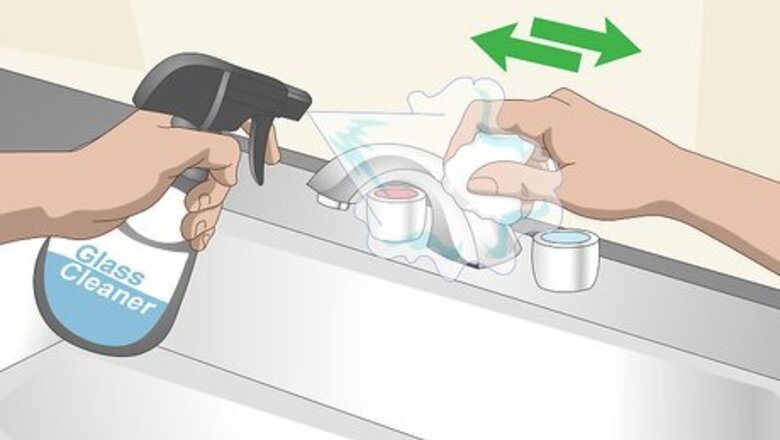
views
Checking for a Brand Logo
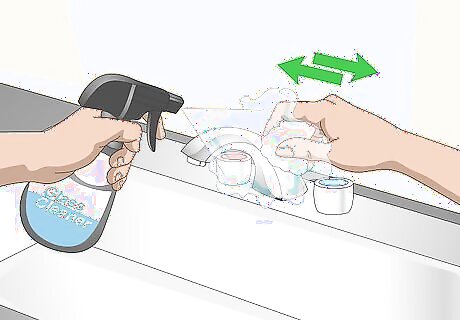
Clean the faucet handles and check for a logo. To ensure that dirt and grime aren’t covering up the brand name or logo, spray the faucet and the handles with a multipurpose cleaner or glass cleaner. Wipe the cleaner off with a rag, and then observe the faucet and handles to see if there are any words or shapes that may represent a particular brand.
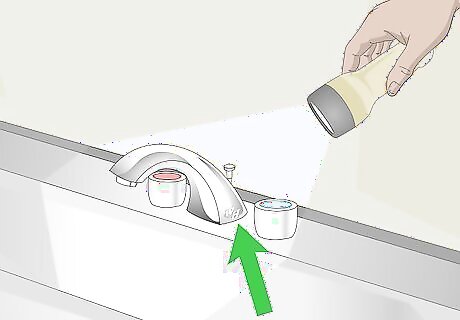
Look at all of the faucet’s parts under a flashlight. Some brand names and logos on faucets are very small or are etched into inconspicuous parts of the faucet. To get a better look at the faucet, hold a flashlight over it and get close to it. Look all around the curves of the faucet and the handles to be sure that you aren’t missing a subtle representation of the faucet brand.
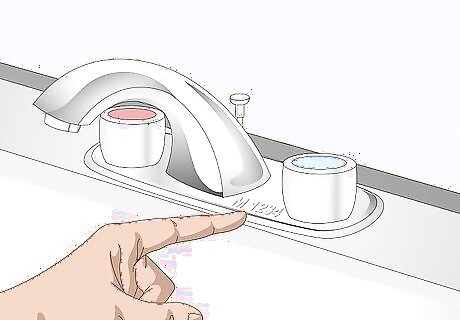
Look for a model number if there’s no logo. While less likely, there may just be a model number visible on the faucet instead of a brand name or logo. If you find a number but no brand information on the surface of your faucet, try looking up the number online. If you search the entire model number, the company’s webpage may pop up.
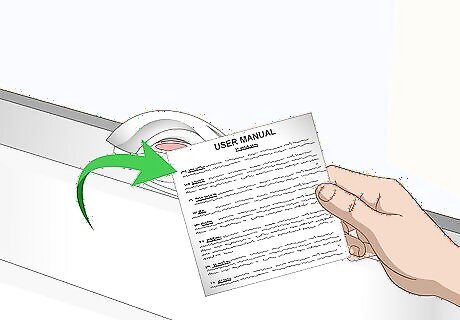
Look for a user manual if you recently bought the faucet. Many items that you purchase come with an instruction booklet or a small informational packet. Look around your home to see if you can find the manual that may have come with your faucet.
Locating the Broach and Counting its Splines
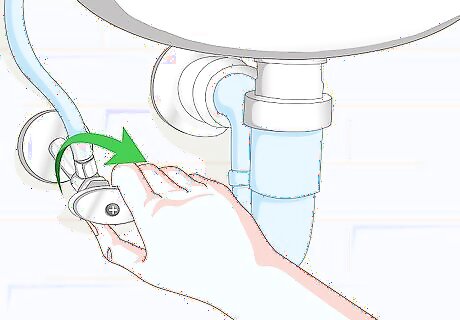
Turn off the water supply before taking the faucet apart. To turn off your water supply, look for a stop valve that will keep the water from flowing through your fixture. Stop valves are usually located below or near the fixtures, and they typically have a chrome finish and an oval shape. Turn the stop valve clockwise until you can't anymore before taking your faucet apart. If you’re working with a sink faucet, the stop valves should be located underneath the sink and all the way back. If you can’t find the stop valve, you may need to shut off your entire home’s access to water. To do this, find the main shut off valve and turn it clockwise. The main shut off valve is most likely located inside near your water meter.
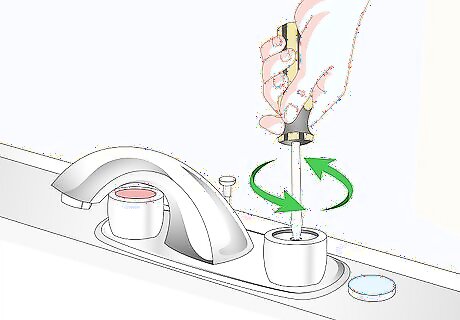
Use a screwdriver to remove the faucet’s indicator button and handle. With a flathead screwdriver, pop off the indicator or index button, which is typically located on the top of the handle. When you take this off, you should see the head of a screw at the center of the handle. Unscrew this screw with your screwdriver, pull off the handle, and set everything aside.
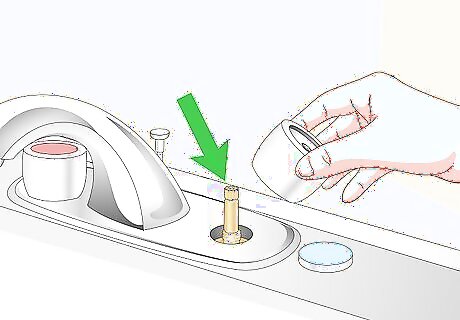
Locate the broach at the top of the stem. At this point, the stem should be exposed and you should be able to see the broach. The stem of the faucet is a cylindrical piece that makes up the moving parts on the inside, while the broach is the gear-shaped piece of metal that sits at the top of your faucet’s stem and allows the faucet valve to open and close.
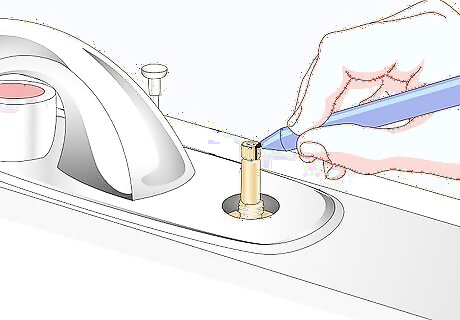
Darken 1 spline with a marker. The splines are the pointed ridges that go all the way around the outside of the broach. Use a permanent marker to darken any 1 of the splines so that you can effectively count how many there are.
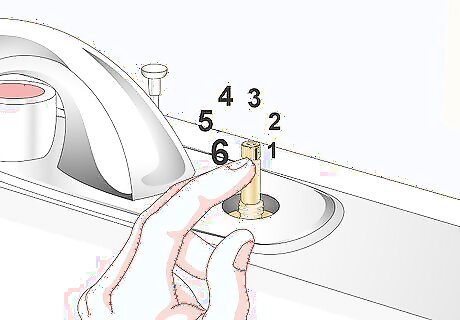
Count all the way around until you end up at the marked spline. Use the marked spline as a starting point. Count each spline and stop when you’ve gotten back to the marked spline. This is the number of splines your broach has.
Identifying by Shape and Size
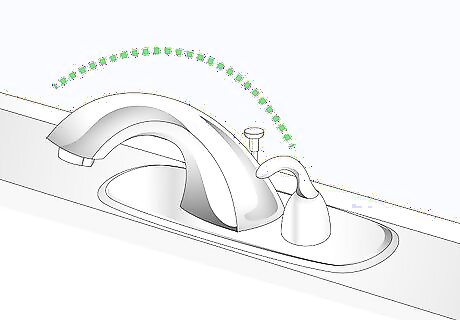
Identify Delta faucets by their " D "shaped broach. Observing this part of your faucet is often a good way to at least narrow down the brand possibilities, as different companies have different broach sizes and shapes. If the broach is " D " shaped, you may have a Delta faucet on your hands. Other brands that have " D " shaped brooches include Moen and Mixet.
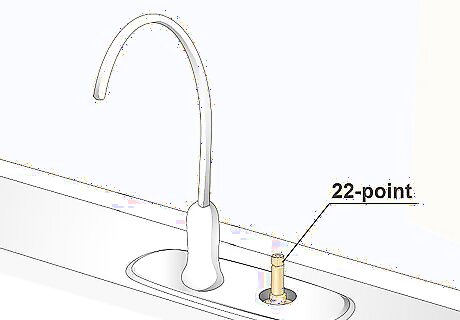
Spot an American Standard faucet by its 22-point broach. This means that the broach at the top of the stem has 22 splines coming off of it. American Standard is one of the more common brands that has this particular number of splines, so if you count 22 points on your broach, your faucet may be an American Standard faucet. To double check, measure the broach. If it measures 0.375 inches (0.95 cm), then it’s likely an old American Standard model, and if it measures 0.438 inches (1.11 cm), then it’s likely a current American Standard model.
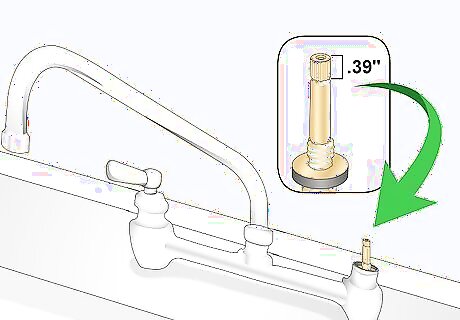
Recognize Fisher faucets by their 0.39 inches (0.99 cm) broaches. Use a ruler or measuring tape to measure your broach. If the measurement is 0.39 inches (0.99 cm), then there’s a good chance that you have a Fisher faucet. To double check, count the splines on the broach. Fisher broaches typically have 12-point broaches. Some other brands that have broaches that measure 0.39 inches (0.99 cm) include Bradley, Elkay, Sears, and Universal Rundle.
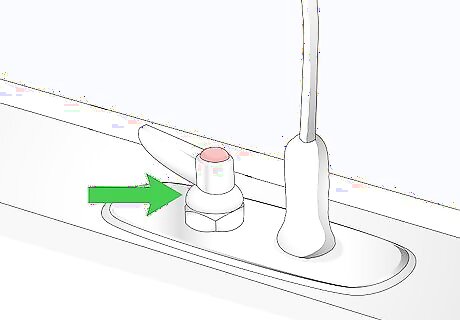
Spot a T&S faucet by the bulges on its stem. Unlike most other brands, T&S faucets have pointy-tipped bulges that stick out on either side of the stem. These bulges are located near where the handle meets the stem. If you notice some excess metal sticking out from your faucet in this area, it may be a T&S faucet.
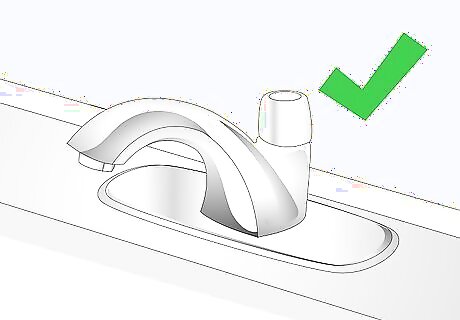
Recognize Chicago Faucet faucets by their bullnose-shaped handle. Take a close look at the shape of your faucet handles. If they’re entirely rounded and don’t seem to have any sharp points or edges, your faucet‘s brand is likely Chicago Faucet.


















Comments
0 comment